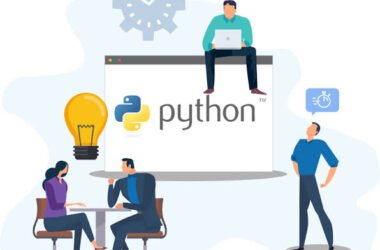As technology advances, the risk of cyber-attacks and security breaches increases. Cybersecurity is a critical issue that affects individuals and businesses alike. Protecting your devices, networks, and data from cyber threats is vital to maintaining the integrity and confidentiality of sensitive information. In this blog post, we will discuss some of the best practices for securing your devices, networks, and data.
Use strong passwords
One of the most important cybersecurity practices is using strong passwords. A strong password should be at least 8-12 characters long and include a combination of uppercase and lowercase letters, numbers, and special characters. Avoid using common words or phrases, such as “password” or “123456,” and never reuse the same password for multiple accounts. Consider using a password manager to generate and store strong passwords securely.
Keep your software up to date
Keeping your software up to date is another essential cybersecurity best practice. Software updates often include security patches that fix vulnerabilities and protect against cyber threats. Set your devices and software to automatically update to ensure you are always running the latest, most secure version.
Use antivirus software
Antivirus software is designed to detect and remove malicious software, such as viruses, spyware, and ransomware, from your devices. Install reputable antivirus software on all your devices, including computers, smartphones, and tablets, and keep it up to date.
Secure your network
Securing your network is critical to protecting your devices and data from cyber-attacks. Use a strong password to secure your Wi-Fi network and change it regularly. Consider using a virtual private network (VPN) to encrypt your internet connection and protect your data when using public Wi-Fi networks.
Use two-factor authentication
Two-factor authentication is an extra layer of security that requires you to provide two forms of identification before accessing an account or device. This could be a password and a code sent to your phone or email. Enable two-factor authentication on all your accounts to protect against unauthorized access.
Be cautious of phishing scams
Phishing scams are a type of cyber-attack that uses fraudulent emails, text messages, or websites to trick you into revealing sensitive information, such as passwords or credit card numbers. Be cautious of any unsolicited emails or messages and never click on links or download attachments from unknown sources.
Back up your data
Backing up your data is essential to protecting against data loss from cyber-attacks or hardware failures. Consider using cloud-based backup services or an external hard drive to store your data securely.
Educate yourself and your employees
Educating yourself and your employees about cybersecurity best practices is critical to preventing cyber-attacks. Develop policies and procedures for handling sensitive information and provide regular training to ensure everyone understands their roles and responsibilities. You can opt for this Certified Ethical Hacking course (CEH) which will help you and your organization protect against any kind of cyber threats. Even though you are an individual and do not have any organization or employees, you can always upskill yourself and make the change in your career that you always wanted.
Monitor your accounts and devices
Regularly monitor your accounts and devices for any suspicious activity, such as unauthorized logins or changes to account settings. Set up alerts to notify you of any unusual activity and report any suspicious activity to your IT department or cybersecurity professional immediately.
In conclusion, cybersecurity is a critical issue that requires continuous attention and effort to protect against cyber-attacks and security breaches. Implementing the best practices discussed in this blog post can help secure your devices, networks, and data from cyber threats. By using strong passwords, keeping your software up to date, using antivirus software, securing your network, using two-factor authentication, being cautious of phishing scams, backing up your data, educating yourself and your employees, and monitoring your accounts and devices, you can reduce the risk of cyber-attacks and protect your sensitive information.
As an additional note, it is worth mentioning that implementing these cybersecurity best practices is particularly important for those accessing content from outside their geographical location, such as with Voot outside India. It is critical to ensure your devices, networks, and data are secure







